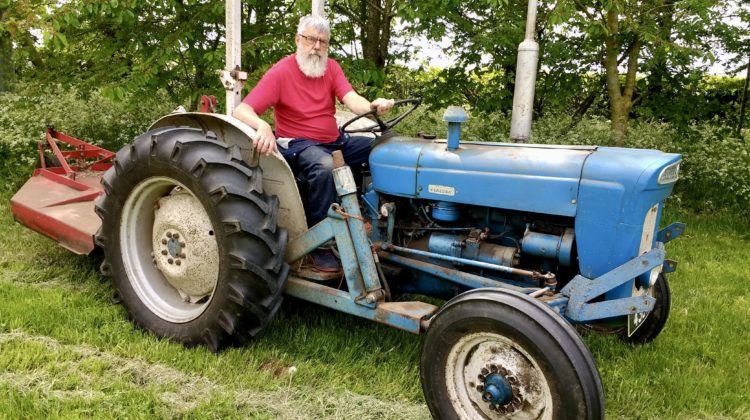
Robert Ashton is the author of Where are the Fellows who Cut the Hay?, the story of how almost forgotten trades and ways are being rediscovered in rural Britain today. As a crowdfunding publishing campaign for the book gets underway, Robert explains how we can learn so much about our future by looking at our past
I think I can sum up my life thus far using the words of the late Douglas Adams: ‘I may not have gone where I intended to go, but I think I have ended up where I needed to be.’
My first job was selling fertilizer for Fisons, then a marketing job in a company that made mobile homes. Redundancy in 1990 prompted me to work for myself in various guises for the next 30 years. Now I’ve returned to my roots and am writing full-time.
My earliest memories of Suffolk are of feeding the ducks with my mother in the River Stour at Brantham, a short walk from our then family home. Later I lived at Needham Market and then Leiston, where I married a local farmer’s daughter and so have been visiting ever since. I’ve lived in Norfolk for more than 30 years, but I still feel that Suffolk is my home.
The pandemic started when I was busy writing my MA dissertation, so in many ways the enforced isolation was well timed. When lockdown eased last summer, I was able to go out and conduct more interviews and finish writing the book. Like many people, the uncertainty and isolation affected my mental health. My daughter is an epidemiologist, and she helped me understand that pandemics invariably run out of steam after a couple of years. That helped me keep things in perspective.
The UEA’s Creative Writing MA course was an awesome experience, and I can well see how it has propelled so many writers from obscurity to global acclaim. I’d written quite a few books on entrepreneurship and business start-up, but the MA took my writing to another level. I write regularly for one or two magazines and use this to stretch my writing in new directions.
My parents gave me a copy of Ask the Fellows who Cut the Hay by George Ewart Evans for my 14th birthday in 1969, and ever since I’ve been fascinated by his work. At the time I had a weekend job on a farm not far from Blaxhall, the village at the centre of his book, and so much of what he’d written was familiar to me. By coincidence his wife was headmistress at the primary school I attended, and another coincidence is that she was a Quaker, as I am now. Evans interviewed people who had been born in the 1880s and his books tell their stories. One of the books we studied on the MA was Primo Levi’s Periodic Table and that was what gave me the idea of structuring my book, Where are the Fellows who Cut the Hay?, so that each chapter looks at the past, present and future of our relationship with something familiar such as milk, barley, or coal.
Researching Where are the Fellows who Cut the Hay?, I was surprised to see just how much new ideas like regenerative agriculture and community owned shops are simply a return to how things used to be, albeit with a contemporary twist. We can learn so much about our future by looking at our past.
I just love the way Unbound involve readers early in the process. They’re as choosy as any other publisher, but their crowdfunding business model means they can publish more books. Readers who pledge their support are rewarded with a high quality, hardback first edition.
My book’s crowdfunding campaign has only recently launched, but as we go through the summer, it will gather momentum. I’ve also developed a schools’ writing competition, based on the book, which businesses will sponsor and get loads of publicity in return. Their sponsorship will take my book to its target.
Obviously, I want the book to sell well, but I also want it to reassure readers, showing just how much our rural past is influencing our future. Future historians will see the period 1950 to 2050 as the time when oil, gas and coal use soared, and then just as quickly fell again as we found more sustainable alternatives.
I’ve become fascinated by oral history and both Suffolk and Norfolk are filled with people and stories I can research, record and share, just as George Ewart Evans did 70 years ago.
To support Robert’s project, visit Where are the Fellows who Cut the Hay? by Robert Ashton: Unbound
Featured image: Robert Ashton, sitting on his 58-year-old tractor










Leave a Reply